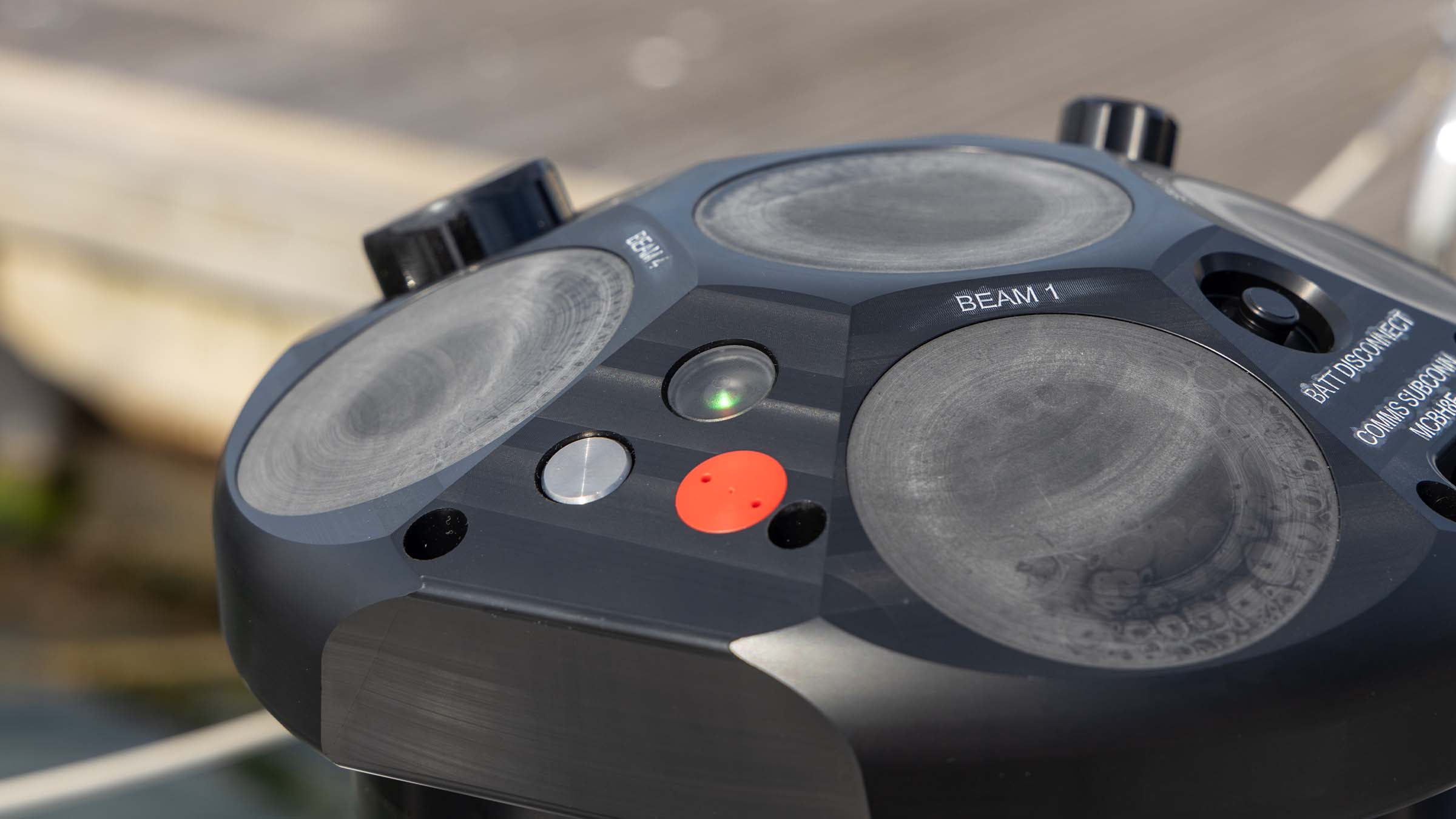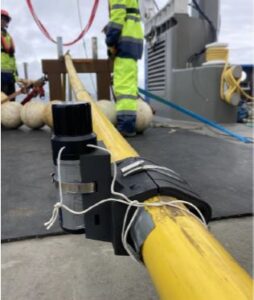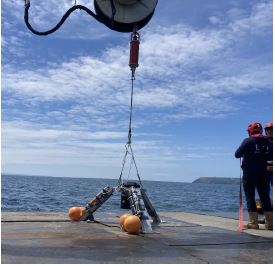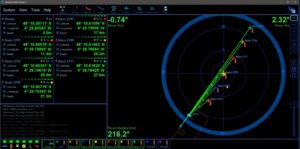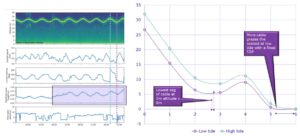With worldwide investment in renewable energy continuing to rise, we anticipate a significant increase in floating offshore wind (FLOW) developments over the next ten years. However, investors are concerned about this nascent technology’s performance in deeper, more dynamic environments, particularly risks associated with dynamic cables.
The challenge
In June 2024, an offshore trial was conducted on a vessel off the coast of Brest, France. The trial was organised by France Energies Marines (FEM) in partnership with multiple stakeholders in the field of FLOW technology. The aim of the trial was to demonstrate and compare different technologies that are best suited for monitoring and detecting any irregularities in the dynamic behaviour of cables, which would be beneficial for future wind farm operators.
Sonardyne, in partnership with survey service provider CADDEN, demonstrated technologies to monitor the cable’s shape and environmental information (such as current velocities, wave frequencies and wave heights) over time. By correlating these data sets, it’s possible to gain insight into why a dynamic cable behaves the way it does. Ultimately, this will provide information to monitor change, predict complete failure and underpin widespread simulations for digital twins across a field. The diagram below demonstrates the proposed cable monitoring solution.

On the vessel, a Mini-Ranger 2 USBL system was used to position and collect data from the acoustic beacons on the subsea dynamic cable. This included an HPT 3000 transceiver head installed on an over-the-side pole assembly, with a Lodestar attitude and heading reference sensor (AHRS) installed above it to measure the vessel’s pitch, roll and heave motions to derive accurate subsea positional data.
To monitor the 85-meter-long lazy wave configured cable, six Nano transponders were installed in two different orientations: inline and perpendicular. This setup ensured a clear line of sight of the acoustic signal to the transceiver. CADDEN also produced custom clamps for each beacon using a 3D model of a Nano.
Each Nano transponder provides lateral georeferenced positions in X and Y using acoustic positioning, alongside depth and inclination data from its built-in pressure and inclinometer sensors.
- Figure 2 HPT 3000 with a Lodestar AHRS unit above it. Also pictured is iXblue SeapiX-R system courtesy of Exail
- Figure 3: Nano transponder mounted inline with the cable using the CADDEN clamps
- Nano transponder mounted at an adjacent angle to the cable using the CADDEN clamps
The environmental monitoring solution
To provide a full picture of all elements that may affect dynamic cables, the opportunity was taken to deploy an Origin 600 Acoustic Doppler Current Profiler (ADCP) to monitor the ocean environment. It was set up to continuously collect wave and current data at 4Hz, ensuring the highest resolution data for the short-term project. As a helpful tip, before deployment, the unit displays a green LED flashing to confirm there is a live schedule in place.
Additionally, RT6-1000 acoustic release systems were mounted to the frame to enable a release from the seabed while a RT6-3000 was also used to detach the winch wire from the frame after being lowered to the seabed. With the over-the-side USBL pole ready for use, the team then deployed the Origin 600 frame, and all releases were activated by Ranger 2 software commands sent via the HPT 3000 transceiver.
Harvested Origin 600 ADCP data confirmed its operation with several data uploads throughout the trial. The data from the PD0 file was used to observe current velocities and its effect on the profile of the cable during the trial. Whilst the raw data was downloaded from the ADCP after the trial for processing to compare wave and current against vessel movements and consequent cable shape.
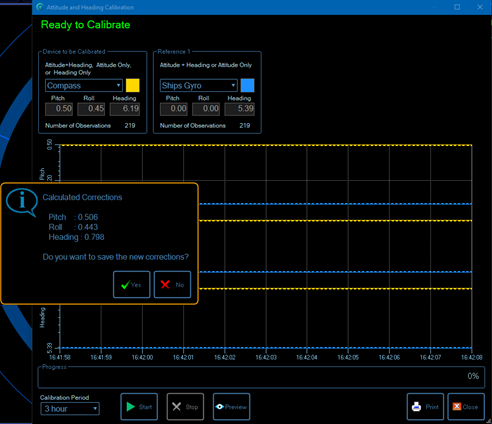
Save valuable time by utilising the Origin 600 for CASIUS USBL calibration.
Typically, offshore surveyors deploy a dedicated transponder on the seabed to conduct a USBL calibration. This process of deployment and recovery can lead to significant delays, especially in deep water. However, by using an already deployed and operational Origin 600 for the calibration, as demonstrated in this trial, service providers can initiate their operations much sooner.
Acquisition of monitoring data
There were ten scheduled tests over the course of the two-day trail – a mix of vessel static and dynamic testing, where the vessel moves forward and aft up to 15m to mimic floating foundation excursion events.
For each test, a commslog file for both a position and SENS (pressure and inclinometer sensor) measurement output for all the Nano transponders was saved to the topside PC.
To conserve the Nano 6 batteries, there were two different measurement schedules for each day: a conservative schedule of an update every 10 seconds on day one, followed by a fast one, every three seconds, on day two
Trial outputs
Following the data analysis, several findings emerged from the trial conducted by Sonardyne, CADDEN, and France Energies Marines. All parties will present the trial results and their implications over the coming year. However, here, we can highlight some changes in cable behaviour observed over a complete tidal cycle.
It was observed that as the cable sank with the ebbing tide, the sag of the lazy wave came within 5m of the seabed. Additionally, we saw an extended cable section before the touchdown point to be in contact with the seabed. This effect over time would lead to an increased fatigue level over that segment of the cable and likely failure.
- Figure 4 The Origin 600 on deck, with an RT6-3000 to release from the winch wire and RT6-1000 on the legs of the tripod lander.
- Figure 5: Image of the real-time Nano transponders updating in Ranger 2 UI
- Figure 6: Behaviour during tidal cycle
“This demonstration provided essential information to show operators how Sonardyne acoustic positioning and communications can provide a truthing of cable behaviour by determining absolute measurements from both cable and environment. At the same time, learnings from the demonstration will assist with the development of long-life monitoring solutions for this exciting new sector. A big thank you to all those who helped deliver this project, especially our team onboard, Guy Hebden from Sonardyne and Dominique Chassagne from CADDEN.”
Mike Ellis, Sonardyne Business Development Manager – Offshore Renewable Energy
Summary
Mobilising the equipment for the trial was straightforward, highlighting the versatility of Sonardyne’s technology. During the trial, all acoustic parameters functioned as expected. The positioning system and the acoustic telemetry consistently transmitted all sensor information from the transponders to build a 3D temporal model of the cable throughout the trail. The trial demonstrated that the system could deliver baseline measurements from the cable installation point. However, transponders with similar sensing capabilities but significantly superior battery durability would be better suited for long-term monitoring campaigns. This would allow real-world cause-and-effect data to support simulations embedded within digital twin models for a floating offshore wind farm.

